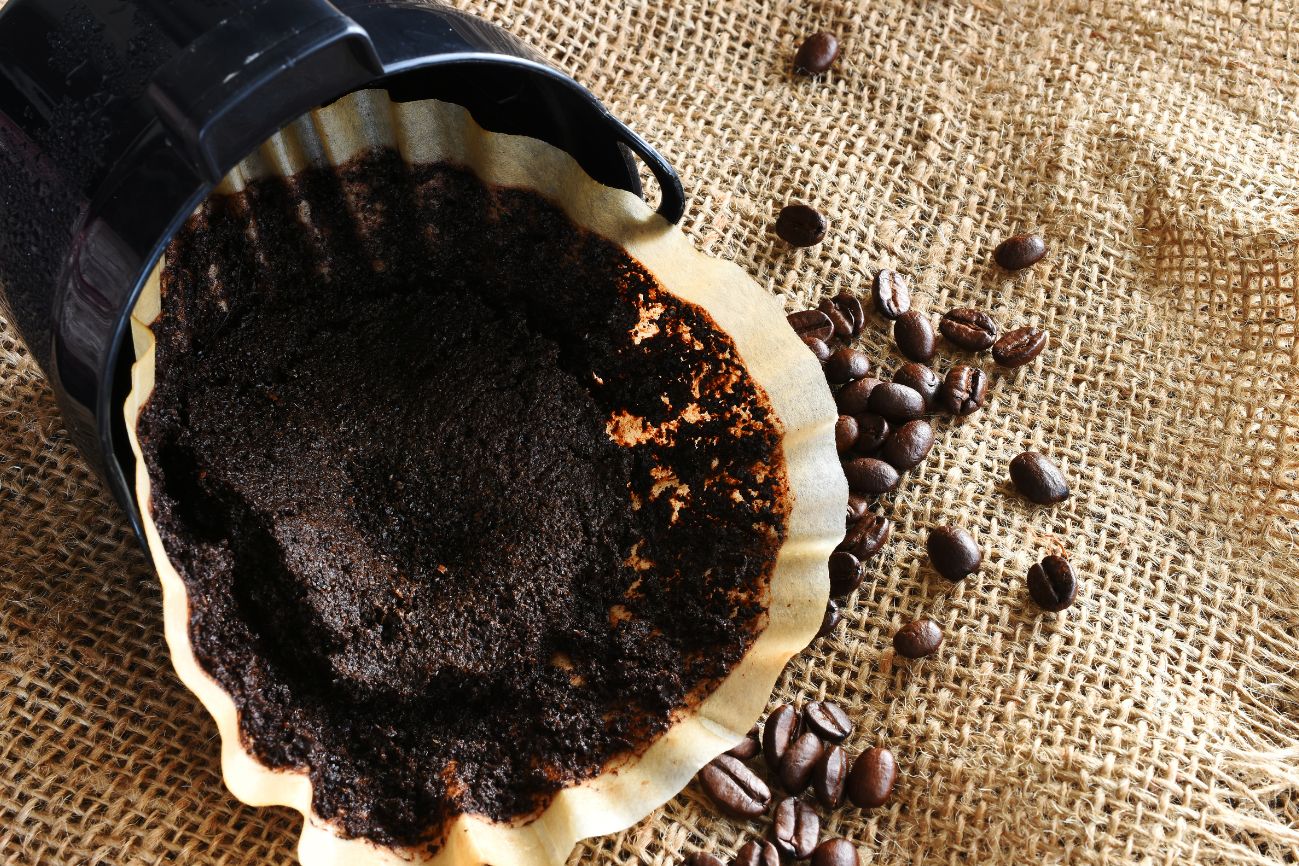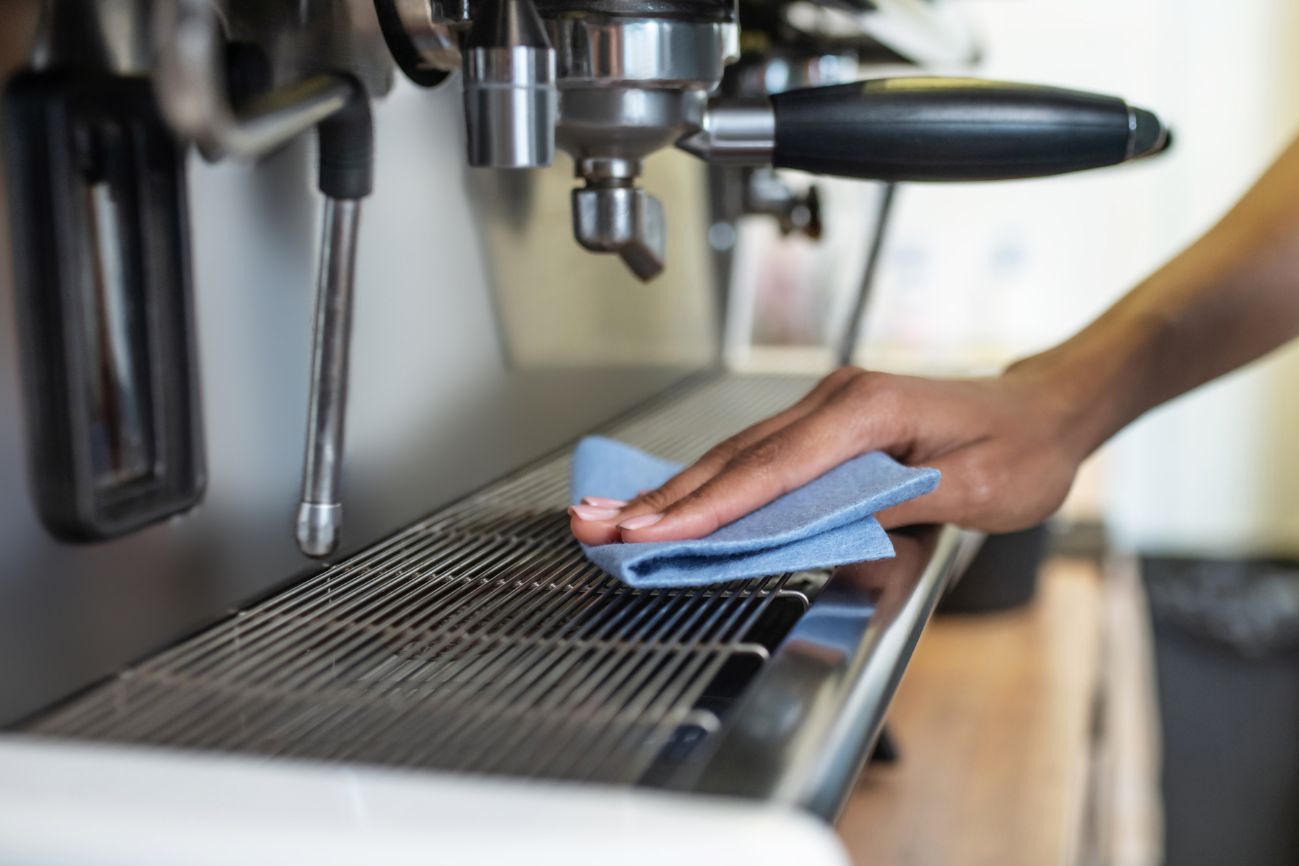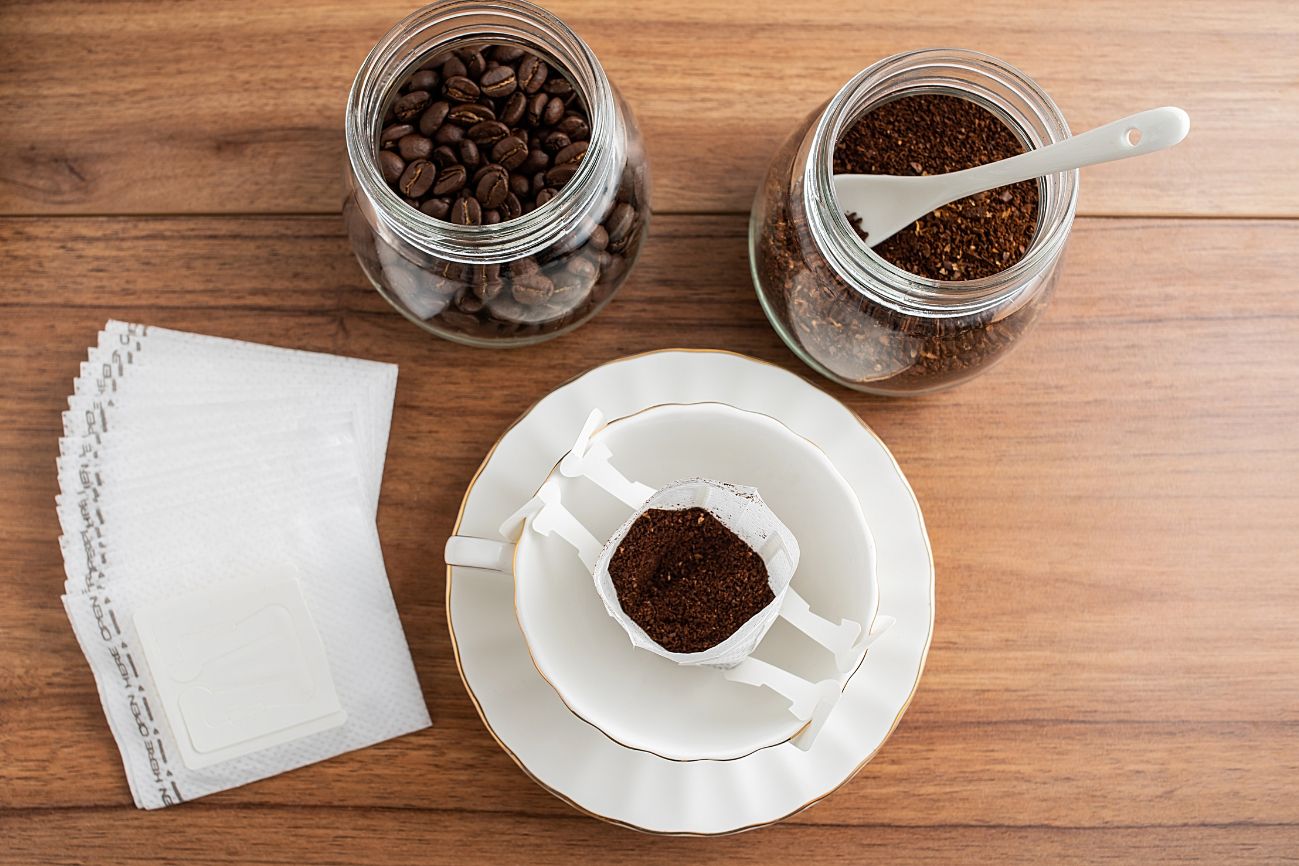If you’re a coffee lover, chances are you brew a fresh cup (or three) every day, leaving behind piles of used coffee grounds. Instead of tossing them in the trash, why not give them a second life?
According to the Coffee Facts Report 2024 more than 2.2 billion cups of coffee are consumed worldwide daily. This leads to millions of tons of coffee grounds in waste. But these wasted grounds can be reused in many eco-friendly ways. You can make natural fertilizers or even skin products and the likes. Let’s explore 10 eco-friendly coffee tips to recycle coffee grounds.
1. As Odor Neutralizer: Freshen Up Your Space with Coffee Grounds
How it works:
Used coffee grounds freshen up your environment by counterbalancing the unpleasant smell. Nitrogen acts as a neutralizing agent and naturally eliminates unpleasant odor.
How to use
- Place dried coffee grounds in a bowl and set it in the fridge to absorb odors.
- Fill a sock or small pouch with used coffee grounds to freshen up shoes, gym bags or closets.
- In your trash bins to neutralize the foul smell.
- Place them in your smelly cupboards.
Eco-Friendly Tip
For optimal freshness, keep replacing coffee grounds with new ones every one or two weeks, also keep them dry to prevent mould.
Why It’s Sustainable
These are eco-friendly and sustainable because they act as natural air fresheners and reduce waste. No chemical compound is present in these coffee grounds and are best for protecting the environment.
2. DIY Exfoliating Scrub: Revitalize Your Skin with Used Coffee Grounds
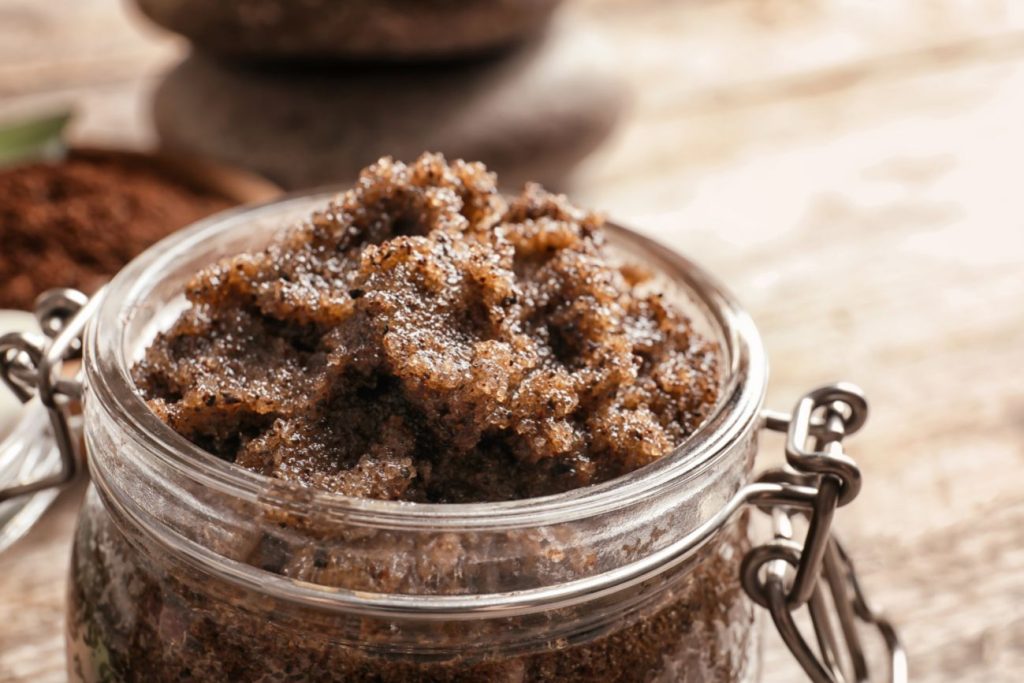
How it works
The coarse texture of used coffee grounds makes them a fantastic natural exfoliant for your skin.These grounds create an effective scrub that removes dead skin cells from the body. Plus, the caffeine in coffee is known to stimulate blood flow and reduce the cellulite.
How to use
- Mix coffee grounds with coconut oil.
- Add a dash of honey for added moisture.
- Gently scrub on your face and body.
- Wash with moderately warm water.
Eco-Friendly Tip
If you want good results mix your favorite essential oil in the mixture.
Why It’s Sustainable
Creating a DIY with coffee grounds skincare product helps in waste reduction as these degrade biologically. It also protects the environment from degradation.
3. Coffee Hair Treatment: Eco-Friendly Coffee Tips for Healthy Hair
How it works
Consumed coffee grounds also used for treating your hair naturally. These make your hair shinning and protect your scalp. The rough texture of the coffee grounds when applied to the scalp it rubs away the dead skin cell, improves blood circulation and keep hair healthy.
How to use
- Mix coffee grounds with your regular shampoo.
- Massage into your scalp.
- Rinse thoroughly.
- Apply weekly for best results.
Eco-Friendly Tip
After applying coffee grounds to your hair, collect the coffee water in a tub and water non-sensitive outdoor plants.
Why It’s Sustainable
This treatment replaces expensive hair masks and chemical-heavy products, supporting sustainable coffee living while being kind to your wallet.
4. As Natural Fertilizer for Plants: Eco-Friendly Coffee Tips for a Greener Garden
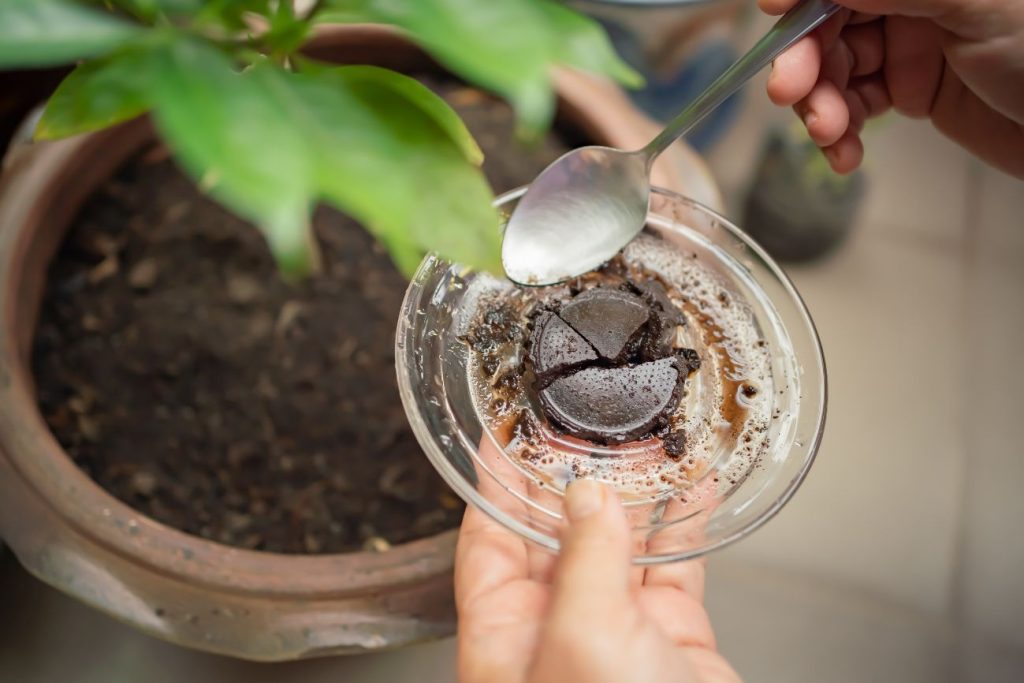
How it works:
Reuse coffee grounds as a natural fertilizer. Nitrogen is abundant in these grounds, making them ideal for plants. These coffee grounds not only improve soil structure but also promote healthy plant growth. They retain moisture as well. Also, worms and insects are attracted to these grounds.
How to use:
- Dry your used coffee grounds completely to prevent mold.
- Scatter them evenly around the base of acid-loving plants like tomatoes, roses, and hydrangeas at your garden.
- Add them to indoor plants as a soil booster.
Eco-Friendly Tip:
Clean coffee grounds before use. This process reduces the acidity, and sensitive plants like tomatoes won’t be affected.
Why It’s Sustainable:
This method is sustainable because it reduces the usage of chemical fertilizers and encourages and sustainable coffee living. It’s an effective method for easy plantation and waste reduction.
5. Composting with Used Coffee Grounds for Healthier Soil
How it works
Used coffee grounds are a composting superstar. They’re rich in nitrogen. Nitrogen is an essential fertilizer and makes soil fertile. Coffee grounds add nitrogen to compost which improve soil structure prevent it from drying.
How to Use Used Coffee Grounds in Compost
- Mix coffee grounds with other organic matter like fruit peels or leaves. These materials contain carbon in excess.
- Keep the proportion (30:1) of carbon to nitrogen.
Eco-Friendly Tip
Due to higher level of Nitrogen and acidity keep coffee grounds 20% of your compost to ensure it stays healthy and balanced.
Why It’s Sustainable
Balanced composting reduces landfill waste and promotes healthier soil. This is sustainable and environmental method.
6. Pest Repellent: Eco-Friendly Coffee Tips for Your Garden
How it works
Reuse coffee grounds to repel pests like ants, bed bugs, and flies. The strong scent acts as a repellent and repels pests from approaching and settling.
How to use
- Sprinkle coffee grounds around plants.
- Create a barrier near the entry points of your home.
- Place small bowls of ground near pest-prone areas.
- Use citrus peel to enhance repelling power.
Eco-Friendly Tip
Reapply coffee grounds after heavy rain for continued effectiveness.
Why It’s Sustainable
Coffee grounds as a pest repellent eliminate the need for chemically produced pesticides and insecticides. It not only supports sustainable coffee living but also makes the environment toxicant-free. Plus, it promotes organic gardening.
Look at the table how coffee grounds deter insects.
7. Homemade Cleaning Paste: Scrub Tough Messes with Used Coffee Grounds
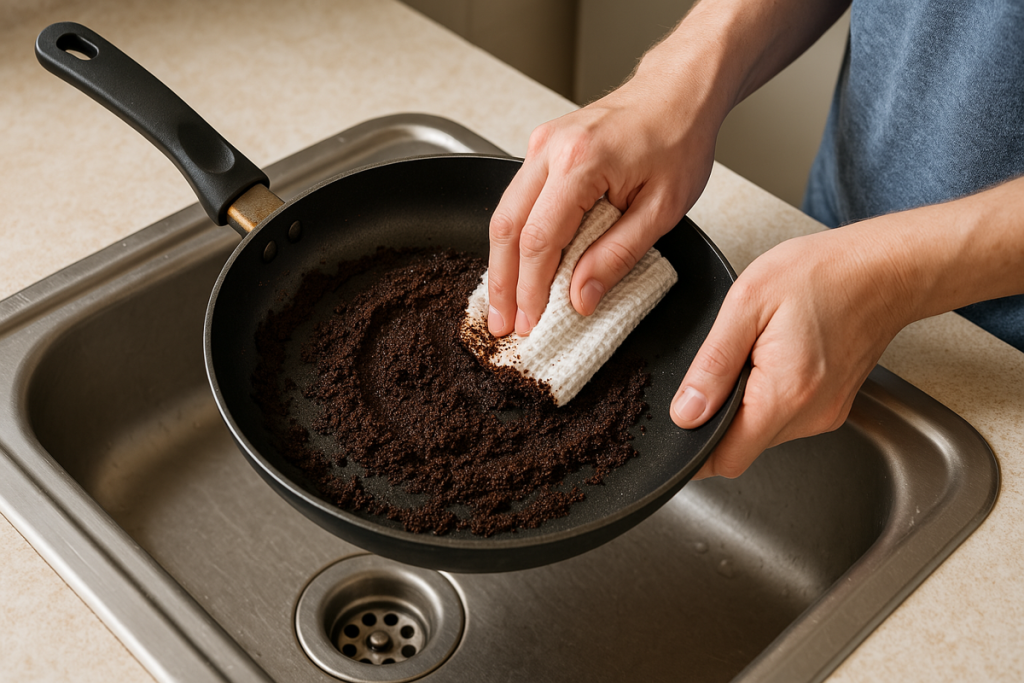
How it works
Used coffee grounds have a granular texture which is perfect for the removal of stains, and lubricants like grease, and soot. Their slightly mild antibacterial nature makes these coffee grounds suitable for deep cleaning.
How to use
- Combine coffee grounds with a small amount of dish soap.
- Remove nasty stains from your kitchen and washroom.
- Rub coffee grounds on pans to clean off stuck food.
- Use Coffee-ground paste to clean railings and gates.
Eco-Friendly Tip
Avoid applying coffee grounds on porous surfaces like marble. The dark colour of the coffee may ruin the surface appearance as it can soak in and leave stains that are difficult to remove.
Why It’s Sustainable
It is environmentally friendly and sustainable because it eliminates the need for chemically manufactured products. Also, it reduces waste by utilizing already-used coffee grounds which degrade naturally without taking a toll on the environment.
8. Reduce Dust and Ash Cleanup
How it works
Used coffee grounds have a slightly damp texture which helps weigh down fine particles like ash and dust. This prevents the ash from becoming airborne during cleanup, making the process cleaner and easier.
How to use
- Collect your used coffee grounds and allow them to dry slightly so they’re damp but not dripping.
- Sprinkle the coffee grounds evenly over the ashes in your fireplace or fire pit.
- Sweep or scoop the ashes into a dustpan as usual. The coffee grounds will keep the dust from spreading.
Eco-Friendly Tip
Once you’ve collected the ash and coffee grounds, consider adding the mixture to your compost bin. Both materials are biodegradable and can contribute valuable nutrients to your compost pile.
Why It’s Sustainable
Reusing coffee grounds to clean ash reduces waste by repurposing a byproduct of your daily coffee routine. It also eliminates the need for disposable cleaning products, making it a zero-waste solution that’s kind to the environment.
9. DIY Coffee Candles: A Sustainable Coffee-Based Idea
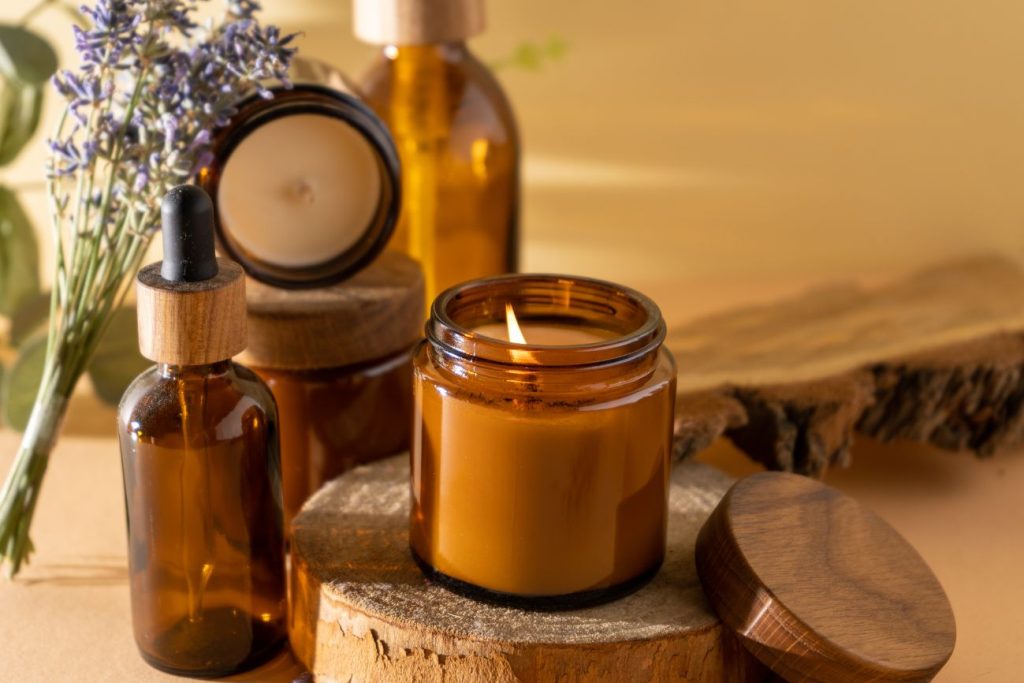
How it works
DIY with coffee grounds with coffee is a five-finger fun exercise. Simply add coffee grounds to the wax, when you light the candle, it gives a natural coffee smell and makes the atmosphere cozy. Instead of throwing coffee grounds away, it’s a sustainable idea.
How to use
- Melt candle wax in a heat-safe container.
- Mix in used coffee grounds.
- Pour the wax mixture into a jar with a candle wick.
- Let it cool and harden before lighting.
Eco-Friendly Tip
For an extra environmentally friendly touch, reuse the leftover wax and make coffee-scented candles. It reduces waste and gives new life to wax that might otherwise be thrown away.
Why It’s Sustainable:
Its sustainability lies in the fact that it reduces the usage of synthetic fragrances and less environmental degradation as these are eco-friendly, aligning with sustainable coffee living principles.
10. Natural Fabric Dye: A Sustainable Coffee-Based Dye Solution
How it works
Coffee grounds can act as a natural dying agent. These are mostly used for dying fabrics, paper, or even Paschal eggs. The rich brownish pattern is an eco-friendly alternative to chemically manufactured products like dyes.
How to use
- Boil used coffee grounds in water to create a dye solution.
- Soak fabric or paper in the coffee dye.
- Let it sit for a few hours to achieve the desired shade.
- Dry it after washing up.
Eco-Friendly Tip
Employ organic cotton or recycled paper for this project. Experiment with different soaking times for varied color shades.
Why It’s Sustainable
Organic dyes made with coffee ground do no cause water pollution when it get mixed with water channels. It’s also a sustainable method for waste reduction as it promotes homemade organic products.
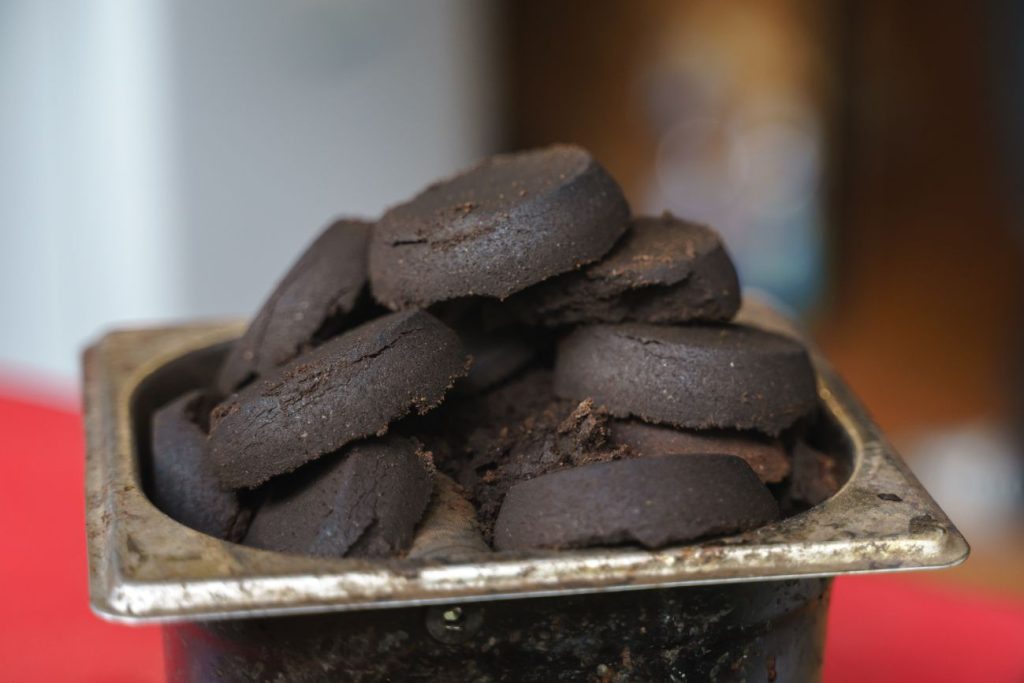
Plus Tip – Brew a Mild Second Cup with Used Coffee Grounds
While used coffee grounds won’t make a robust second brew, they can still be used to create a mild coffee or a cold brew concentrate.
How to Brew Again with Used Coffee Grounds:
- Add used coffee grounds to a French Press with cold water.
- Steep for 12–24 hours and strain for a light cold brew.
Why It’s Great: It’s a resourceful way to stretch your coffee usage and enjoy a lighter brew.
How to Store Used Coffee Grounds
To make the most of your used coffee grounds, proper storage is essential:
- Dry Them Thoroughly: Spread the grounds on a baking sheet and let them air dry to prevent mold.
- Use an Airtight Container: Store dried grounds in a sealed jar or container.
- Use Quickly: For optimal freshness, use your stored grounds within a week.
FAQS about
Q. Can coffee remove dark circles?
A. While not promising overnight results, the gradual application of a DIY coffee mask may help alleviate dark circles.
Q. Do dry coffee grounds attract bugs?
A. Yes, coffee grounds repel insects and pests. They contains such compounds in them that are toxic to many insects and buys.
Q. Which insects get repelled by coffee grounds?
A. Used coffee grounds not only repel mosquitoes but also wasps, bees, and other insects.
Q. Why does ground coffee go bad?
A. Ground coffee goes bad quickly because its larger surface area is exposed to air, causing it to become stale faster.
Q. Is it OK to eat dry coffee grounds?
A. Yes, you can eat dry coffee grounds! Many people are curious about their taste and potential health benefits.
Q. What products can I make with coffee grounds?
A. Coffee grounds can be used to make drain cleaners, perfumed soaps, scented candles, deodorizing agents, and even fertilizers for gardening.
Final Thought
In this article, you’ve discovered eco-friendly coffee tips for using coffee grounds for a greener lifestyle. You can turn them into natural fertilizers, body scrubs, and even pest control. These practices ensure environmental sustainability. And that’s not all they do, they save money as well. Coffee has many useful uses around the house and garden.
Remember, reducing waste with coffee grounds and living sustainably are easy steps to reduce your environmental impact. So, don’t throw away the grounds when you drink your next cup of coffee. Instead, explore the many ways they can help create a greener future.
Let’s reduce waste with coffee grounds and create a more sustainable world together.

